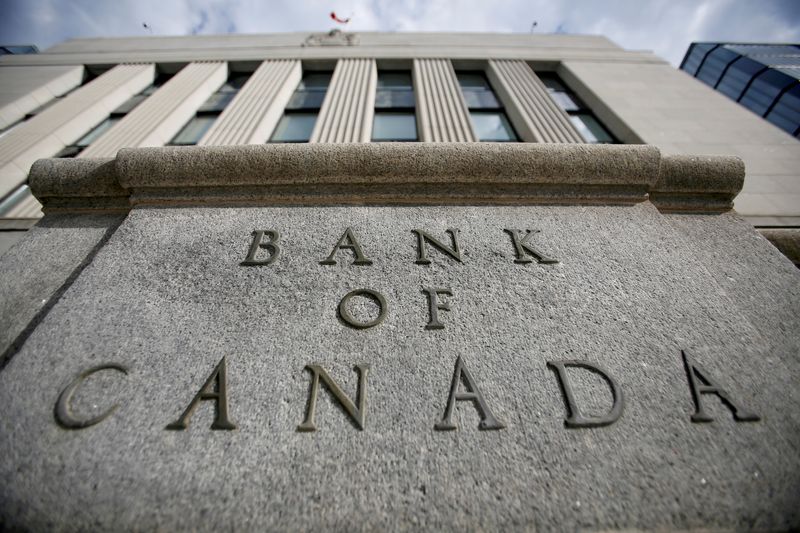By Julie Gordon and David Ljunggren
OTTAWA (Reuters) - The Bank of Canada announced a smaller-than-expected interest rate hike on Wednesday and said it was getting closer to the end of its historic tightening campaign as it forecast the economy would stall over the next three quarters.
The central bank increased its policy rate by half a percentage point to 3.75%, coming up short on calls for another 75 basis points move. It has lifted rates by 350 basis points since March, one of its fastest tightening cycles ever.
GRAPHIC: Central banks ramp up fight against inflation https://graphics.reuters.com/GLOBAL-MARKETS/byvrlokgmve/chart.png
"This tightening phase will draw to a close. We are getting closer, but we are not there yet," Governor Tiff Macklem told reporters at a news conference after the decision.
How much higher rates need to go "will depend on how monetary policy is working to slow demand, how supply challenges are resolving and how inflation and inflation expectations are responding," he said.
When asked if those considerations could lead the bank to not hike at all at its next decision or whether they would simply inform the size of a inevitable increase, Macklem said it "would be closer" to the latter.
"We expect rates will need to rise further. That could mean another bigger-than-normal increase, it could mean that we can move to more normal size 25-basis-point increases," he said.
Macklem said the central bank was still far from its goal of low, stable and predictable inflation at 2%, but was trying to balance the risks of under- and over-tightening.
This as the bank slashed its growth forecasts for 2023 and said economic activity would be close to flat from the fourth quarter of 2022 through the first half of 2023.
When asked if that meant a recession was possible, he said: "Yes, a couple - two, three quarters - of slightly negative growth is just as likely as two or three quarters of slightly positive growth. That's not a severe contraction, but it is a significant slowing."
A technical recession is considered to be two consecutive quarters of negative growth.
DOVISH PIVOT
That darkening outlook likely guided the decision to challenge market pricing with a smaller move, said analysts, noting that while warnings of future hikes take the edge off the surprise, the Bank of Canada may be getting more cautious.
"Today's dovish pivot supports our view that the BoC will continue to taper its tightening cycle into year-end with a 25 bp increase in December leaving the terminal rate at 4%," said Josh Nye, senior economist at RBC Economics, in a note.
The Bank of Canada has been one of the most hawkish major central banks in the current tightening campaign and its policy rate is now the highest of 10 large developed economies, though the U.S. Federal Reserve is expected to hike by 75 basis points next week.
GRAPHIC: Central banks ramp up fight against inflation https://graphics.reuters.com/EUROZONE-MARKETS/movakmlgxva/chart.png
While falling behind the Fed's pace could hit the Canadian dollar, adding to the inflation pinch for importers and consumers, some economists were happy to see the divergence.
"We have several indicators suggesting that we're playing with fire if we think we can follow the Fed all the way up to 5% or so," said Jimmy Jean, chief economist at Desjardins Group.
Inflation in Canada has slowed to 6.9% from a peak of 8.1%, but core measures remain broad-based and persistent. The central bank revised its inflation outlook a touch lower and said it sees a return to the 2% target by end-2024.

The Canadian dollar was trading 0.3% higher at 1.3560 to the greenback, or 73.75 U.S. cents.
Money markets now see interest rates peaking between 4.0% and 4.25% in the coming months, down from nearly 4.5% before the announcement.